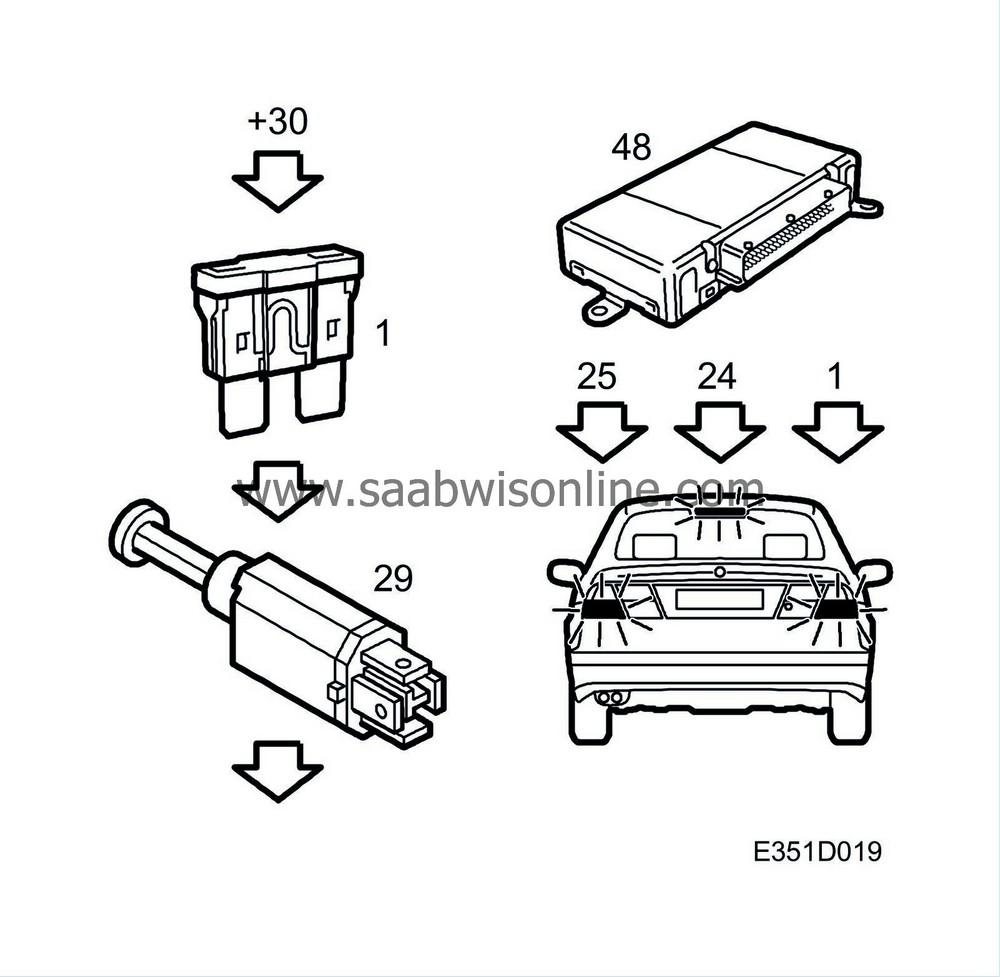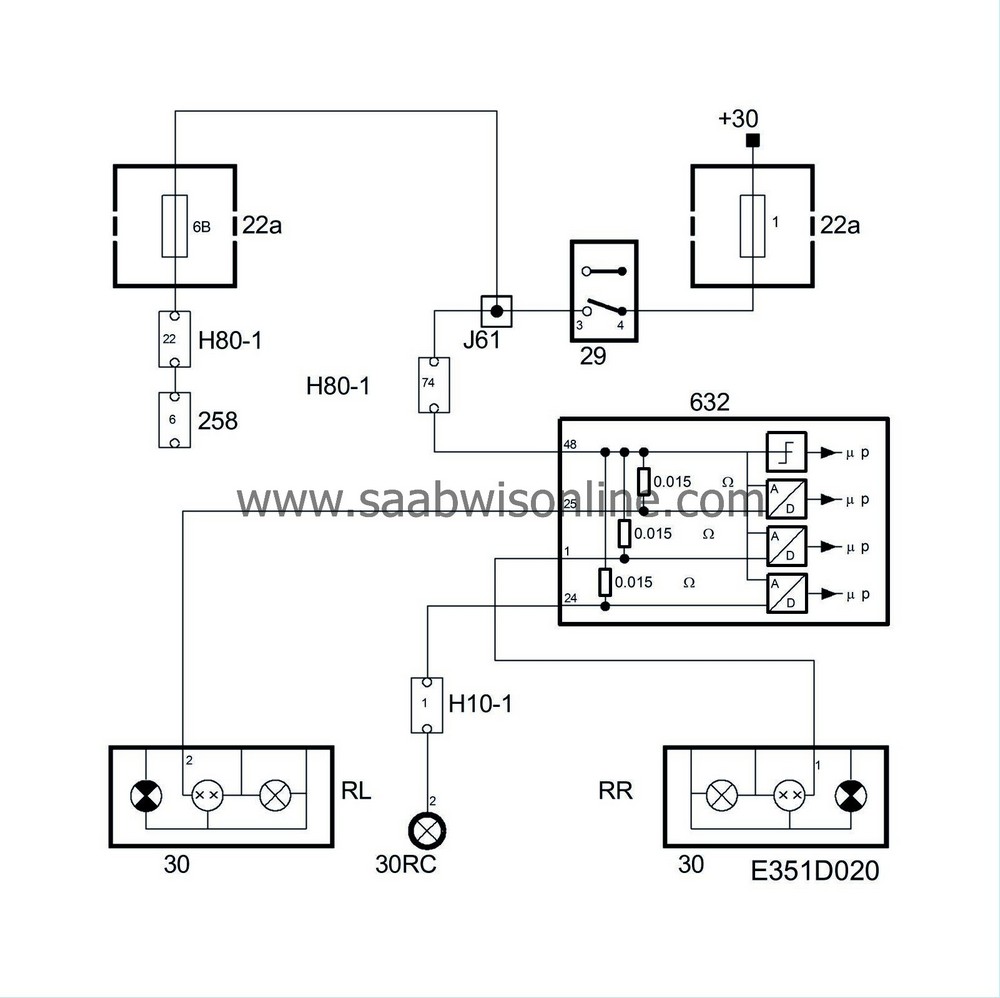Brake lights
| Brake lights |
The brake lights go on when the brake light switch is actuated.
For safety reasons, a brake-light test is run with the ignition in position ON. This function is programmable in SID (ON/OFF). With the ignition in position ON, TWICE puts out a bus message. SIF generates an audible signal and puts TEST BRAKE LIGHTS onto the display. Acknowledging this test requires a pressure on the brake pedal.


The brake-light switch receives +30 voltage via fuse 1. When the brake pedal is depressed, the brake-light switch (29) closes and power is fed to the TWICE pin 48.
The brake lights get their power from pin 1 and pin 25, each through its own resistor inside TWICE. The control module measures the voltage drop across these resistors and thus determines the current that is passing through TWICE to each brake-light circuit.
The high-level brake light consists of five bulbs (30RC) which are powered and monitored from pin 24 on DICE.
The brake-light circuit is prepared for a trailer connection. Where appropriate, the circuit functions correspondingly, except that it uses fuse B (22a).
| Filament monitor |
In TWICE, the current to each pin passes through a shunt resistor for that pin. In the event of filament failure, SID puts a fault message onto the bus. The control module generates an audible signal and puts the message REAR LIGHT FAILURE onto the display.


